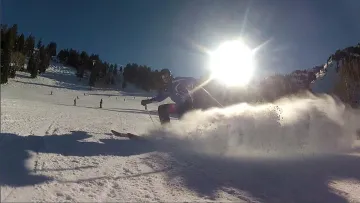Another Wavelength: Jacob Barker

This week in Another Wavelength, we chat with 3rd year Ph.D. student Jacob Barker. Jacob is advised by Research Professor Pavel Polynkin.
Where are you from?
I grew up in Orem, Utah. It's about 45 minutes south of Salt Lake City
What brought you to study optics?
When I was 17 I realized that I was colorblind. The idea of color and the fact that I was seeing color differently than everyone else fascinated me. In an undergraduate physics class I wrote a paper on colorblindness correcting glasses and that interested me in optics research. I ended up joining an ultrafast laser group and just kept going from there.
Who is your hero in science?
Henry Eyring. He was a theoretical chemist famous for the Eyring equation that is used to determine rate changes in chemical reactions. Several chemists received the Nobel prize for work based on Eyring's. He also wrote several great books on science and religion that explain how the two can complement rather than contradict each other. He completed his undergraduate and masters degrees right here at the University of Arizona in the early 1920s!
Describe your research in 20 words or fewer.
We use a really big laser to make another really big laser at a different wavelength. Then we do science!
Describe your research in 200 words or fewer.

We are currently building a terawatt class short-pulse laser in the long-wave infrared (LWIR). We take a commercial titanium-sapphire laser and through several stages of optical parametric chirped-pulse amplification (OPCPA) with a lot of pump power we convert the 800 nanometer wavelength pulse that comes out of titanium-sapphire to the long-wave infrared. There are a lot of engineering challenges to do this efficiently. Not only do we have to worry about the efficiency of the OPCPA, but we are having to worry about the efficiency that we lay out the optics on the table in order to fit everything in the lab.
Once that laser is built, we will do fundamental strong-field science in the LWIR. A lot of strong-field science scales favorably with wavelength. So, this new laser should allow us to see these strong-field effects a lot better.
I am also working on a side project that uses adaptive optics to correct ultrashort pulses. We would like to test what regimes that a linear beacon can correct a nonlinear pulse.
Name three neat facts about you.
- I play organ and piano. Occasionally, I substitute as the organist for my local congregation.
- I am an avid skier. I don't miss the cold of Utah, but I sure miss the skiing.
- I got married last June of 2020 to my wonderful wife, Paige. A covid wedding wasn't what I expected getting married to look like, but it sure was nice.

